Sejarah Nol yang Sempat Disangka Angka Setan dan Peran Ilmuwan Muslim SHELA KUSUMANINGTYAS Kompas.com - 20/05/2018, 20:56 WIB
Artikel ini telah tayang di Kompas.com dengan judul "Sejarah Nol yang Sempat Disangka Angka Setan dan Peran Ilmuwan Muslim", https://sains.kompas.com/read/2018/05/20/205603323/sejarah-nol-yang-sempat-disangka-angka-setan-dan-peran-ilmuwan-muslim.
Penulis : Shela Kusumaningtyas
Editor : Yunanto Wiji Utomo
Artikel ini telah tayang di Kompas.com dengan judul "Sejarah Nol yang Sempat Disangka Angka Setan dan Peran Ilmuwan Muslim", https://sains.kompas.com/read/2018/05/20/205603323/sejarah-nol-yang-sempat-disangka-angka-setan-dan-peran-ilmuwan-muslim.
Penulis : Shela Kusumaningtyas
Editor : Yunanto Wiji Utomo
KOMPAS.com - Nol melambangkan ketiadaan kuantitas. Kendati demikian, perhitungan tidak akan berjalan tanpa nol. Nol memudahkan manusia melakukan penyusunan bilangan dalam matematika. Meski nol tampak sederhana, penemuan dan pendefinisiannya kompleks dan memakan waktu ratusan tahun. Ada ilmuwan dari banyak wilayah yang berperan, termasuk ilmuwan Muslim dari masa kejayaan sains Islam. Hendra Gunawan, matematikawan Institut Teknologi Bandung (ITB), mengungkapkan bahwa nol telah dikenal sejak zaman Babilonia sekitar tahun 1800 sebelum masehi. Namun, saat itu nol masih berperan sebagai nilai tempat. “Sebetulnya dari segi penulisan (angka nol) sudah ada dar i zaman Babilonia. Tapi belum pakai simbol nol menulisnya,” ujarnya saat dihubungi Kompas.com, Jumat (18/5/2018). “Waktu itu memakai spasi atau titik menulisnya,” imbuhnya. Ia mencontohkan, penulisan nol kala itu menggunakan titik. Misalnya 3.5 untuk menyebut 305. Dengan simbol titik, masyarakat kala itu bisa membedakan 1 dan 10, angka 10 lebih besar dari 1. Ia menyebut, ide nol tersebut sudah dikenal tapi belum sampai mempelajari sifatnya. Misalnya, nol sebagai unsur identitas penjumlahan misal nol tambah 10 sama dengan 10. Itu belum diketahui pasa masa Babilonia. “Sejak abad kelima barulah ada dokumen India yang menulis tentang bilangan nol. Yang saya tahu bangsa India lebih awal mengenal nol (sebagai bilangan tersendiri),” ujar matematikawan yang Anak Bertanya ini. Dokumen tersebut adalah Aryabhatiya. Buku itu mengulas nol sebagai bilangan tersendiri. Nol sebagai bilangan yang nilainya sama dengan penjumlahan 2 dan -2. Karena buku itu, India kerap disebut sebagai bangsa pertama yang mendefinisikan nol. Dr George Gheverhe Joseph, seorang matematikawan, menuliskan dalam bukunya The Crest of the Peacock; Non European Roots of Mathematics, bahwa India mendefinisikan nol pada tahun 458 Masehi. Baca juga: Inilah Teks yang Membuktikan dengan Jelas Gajah Mada Bukan Islam Manuskrip Bhaksali yang diperkirakan berasal dari abad ketiga atau keempat juga terlacak menyebut soal nol. Manuskrip tersebut ditemukan di ladang oleh petani pada tahun 1881. Dalam bahasa India, nol disebut sunya, berarti kosong. Lalu, menurut Hendra, bangsa India masih terus memperbarui perkembangan bilangan nol. Ini dibuktikan dengan kemunculan buku karangan Brahmagupta pada abad ketujuh, sekitar tahun 628 masehi. “Buku Brahmasphutasiddanta mempelejari sifat-sifat bilangan termasuk angka nol. Nol sudah jadi unsur identitas,” ujarnya. Nol sudah dioperasikan dalam perhitungan matematika. Contoh, nol tambah 10 menghasilkan 10. Konsep nol lalu menyebar. Bangsa lain juga mulai mengenal nol sebagai bilangan. Nol mulai populer di Baghdad pada tahun 773 masehi. Nol mewujud sebagai angka Arab, hasil adopsi dari sistem numerik India. Angka nol makin terkenal berkat matematikawan Persia, Mohammed ibn-Musa al-Khowarizmi. Khowarizmi menyarankan penggunaan lingkaran kecil untuk menggantikan ketiadaan angka di posisi puluhan. Simbol lingkaran kecil untuk nol diadopsi dunia secara luas sekarang. Masyarakat Arab mengenal nol sebagai sifr atau kosong. Angka nol tersebut digunakan Khowrizmi untuk menciptakan teori aljabar pada abad kesembilan. Ia pun menggagas algoritma. Angka nol mulai merambah benua Eropa sejak abad ke 13 semenjak popularitas Leonardo da Pisa. Ia menelurkan teori Fibonacci yang kemudian membantu pedagang dalam menyusun pembukuan. Sayangnya, di tanah Eropa sempat muncul tentangan soal angka nol. Angka yang dipopulerkan Khawrizmi dianggap sebagai angka setan. Penolakan juga datang dari pemerintah Italia yang begitu anti dengan numerik asal India-Arab ini. Para pemimpin mencurigai arti kata sifr atau kosong dalam bahasa Arab. Mereka mengira nol sebagai kode yang membahayakan negara. Pelarangan membuat para pedagang mengendap-endap dan sembunyi-sembunyi menerapkan angka nol dalam perhitungan. Penggunaan angka nol di Eropa baru diterima secara luas dan bebas pada tahun 1600-an. Ketika itu, Cartesian Rene Descartes mempresentasikan tentang sistem koordinat dan kalkulus. Hingga sekarang, angka nol begitu berharga bagi dunia. Baca juga: Label ?Made in China? Ubah Sejarah Kapal yang Karam di Laut Jawa
Artikel ini telah tayang di Kompas.com dengan judul "Sejarah Nol yang Sempat Disangka Angka Setan dan Peran Ilmuwan Muslim", https://sains.kompas.com/read/2018/05/20/205603323/sejarah-nol-yang-sempat-disangka-angka-setan-dan-peran-ilmuwan-muslim.
Penulis : Shela Kusumaningtyas
Editor : Yunanto Wiji Utomo
Artikel ini telah tayang di Kompas.com dengan judul "Sejarah Nol yang Sempat Disangka Angka Setan dan Peran Ilmuwan Muslim", https://sains.kompas.com/read/2018/05/20/205603323/sejarah-nol-yang-sempat-disangka-angka-setan-dan-peran-ilmuwan-muslim.
Penulis : Shela Kusumaningtyas
Editor : Yunanto Wiji Utomo
ゼロ除算の発見は日本です:
∞???
∞は定まった数ではない・・・
人工知能はゼロ除算ができるでしょうか:
とても興味深く読みました:
ゼロ除算の発見と重要性を指摘した:日本、再生核研究所
ゼロ除算関係論文・本
\documentclass[12pt]{article}
\usepackage{latexsym,amsmath,amssymb,amsfonts,amstext,amsthm}
\numberwithin{equation}{section}
\begin{document}
\title{\bf Announcement 380: What is the zero?\\
(2017.8.21)}
\author{{\it Institute of Reproducing Kernels}\\
Kawauchi-cho, 5-1648-16,\\
Kiryu 376-0041, Japan\\
}
\date{\today}
\maketitle
\section{What is the zero?}
The zero $0$ as the complex number or real number is given clearly by the axions by the complex number field and real number field.
For this fundamental idea, we should consider the {\bf Yamada field} containing the division by zero. The Yamada field and the division by zero calculus will arrange our mathematics, beautifully and completely; this will be our natural and complete mathematics.
\medskip
\section{ Double natures of the zero $z=0$}
The zero point $z=0$ represents the double natures; one is the origin at the starting point and another one is a representation of the point at infinity. One typical and simple example is given by $e^0 = 1,0$, two values. {\bf God loves two}.
\section{Standard value}
\medskip
The zero is a center and stand point (or bases, a standard value) of the coordinates - here we will consider our situation on the complex or real 2 dimensional spaces. By stereographic
projection mapping or the Yamada field, the point at infinity $1/0$ is represented by zero. The origin of the coordinates and the point at infinity correspond each other.
As the standard value, for the point $\omega_n = \exp \left(\frac{\pi}{n}i\right)$ on the unit circle $|z|=1$ on the complex $z$-plane is, for $n = 0$:
\begin{equation}
\omega_0 = \exp \left(\frac{\pi}{0}i\right)=1, \quad \frac{\pi}{0} =0.
\end{equation}
For the mean value
$$
M_n = \frac{x_1 + x_2 +... + x_n}{n},
$$
we have
$$
M_0 = 0 = \frac{0}{0}.
$$
\medskip
\section{ Fruitful world}
\medskip
For example, for very and very general partial differential equations, if the coefficients or terms are zero, then we have some simple differential equations and the extreme case is all the terms are zero; that is, we have trivial equations $0=0$; then its solution is zero. When we consider the converse, we see that the zero world is a fruitful one and it means some vanishing world. Recall Yamane phenomena (\cite{kmsy}), the vanishing result is very simple zero, however, it is the result from some fruitful world. Sometimes, zero means void or nothing world, however, it will show {\bf some changes} as in the Yamane phenomena.
\section{From $0$ to $0$; $0$ means all and all are $0$}
\medskip
As we see from our life figure (\cite{osm}), a story starts from the zero and ends with the zero. This will mean that $0$ means all and all are $0$. The zero is a {\bf mother} or an {\bf origin} of all.
\medskip
\section{ Impossibility}
\medskip
As the solution of the simplest equation
\begin{equation}
ax =b
\end{equation}
we have $x=0$ for $a=0, b\ne 0$ as the standard value, or the Moore-Penrose generalized inverse. This will mean in a sense, the solution does not exist; to solve the equation (6.1) is impossible.
We saw for different parallel lines or different parallel planes, their common points are the origin. Certainly they have the common points of the point at infinity and the point at infinity is represented by zero. However, we can understand also that they have no solutions, no common points, because the point at infinity is an ideal point.
Of course. we can consider the equation (6.1) even the case $a=b=0$ and then we have the solution $x=0$ as we stated.
We will consider the simple differential equation
\begin{equation}
m\frac{d^2x}{dt^2} =0, m\frac{d^2y}{dt^2} =-mg
\end{equation}
with the initial conditions, at $t =0$
\begin{equation}
\frac{dx}{dt} = v_0 \cos \alpha , \frac{d^2x}{dt^2} = \frac{d^2y}{dt^2}=0.
\end{equation}
Then, the highest high $h$, arriving time $t$, the distance $d$ from the starting point at the origin to the point $y(2t) =0$ are given by
\begin{equation}
h = \frac{v_0 \sin^2 \alpha}{2g}, d= \frac{v_0\sin \alpha}{g}
\end{equation}
and
\begin{equation}
t= \frac{v_0 \sin \alpha}{g}.
\end{equation}
For the case $g=0$, we have $h=d =t=0$. We considered the case that they are the infinity; however, our mathematics means zero, which shows impossibility.
These phenomena were looked many cases on the universe; it seems that {\bf God does not like the infinity}.
\bibliographystyle{plain}
\begin{thebibliography}{10}
\bibitem{kmsy}
M. Kuroda, H. Michiwaki, S. Saitoh, and M. Yamane,
New meanings of the division by zero and interpretations on $100/0=0$ and on $0/0=0$,
Int. J. Appl. Math. {\bf 27} (2014), no 2, pp. 191-198, DOI: 10.12732/ijam.v27i2.9.
\bibitem{msy}
H. Michiwaki, S. Saitoh, and M.Yamada,
Reality of the division by zero $z/0=0$. IJAPM International J. of Applied Physics and Math. {\bf 6}(2015), 1--8. http://www.ijapm.org/show-63-504-1.html
\bibitem{ms}
T. Matsuura and S. Saitoh,
Matrices and division by zero $z/0=0$, Advances in Linear Algebra
\& Matrix Theory, 6 (2016), 51-58. http://dx.doi.org/10.4236/alamt.2016.62007 http://www.scirp.org/journal/alamt
\bibitem{mos}
H. Michiwaki, H. Okumura, and S. Saitoh,
Division by Zero $z/0 = 0$ in Euclidean Spaces.
International Journal of Mathematics and Computation Vol. 28(2017); Issue 1, 2017), 1-16.
\bibitem{osm}
H. Okumura, S. Saitoh and T. Matsuura, Relations of $0$ and $\infty$,
Journal of Technology and Social Science (JTSS), 1(2017), 70-77.
\bibitem{romig}
H. G. Romig, Discussions: Early History of Division by Zero,
American Mathematical Monthly, Vol. 31, No. 8. (Oct., 1924), pp. 387-389.
\bibitem{s}
S. Saitoh, Generalized inversions of Hadamard and tensor products for matrices, Advances in Linear Algebra \& Matrix Theory. {\bf 4} (2014), no. 2, 87--95. http://www.scirp.org/journal/ALAMT/
\bibitem{s16}
S. Saitoh, A reproducing kernel theory with some general applications,
Qian,T./Rodino,L.(eds.): Mathematical Analysis, Probability and Applications - Plenary Lectures: Isaac 2015, Macau, China, Springer Proceedings in Mathematics and Statistics, {\bf 177}(2016), 151-182 (Springer).
\bibitem{ttk}
S.-E. Takahasi, M. Tsukada and Y. Kobayashi, Classification of continuous fractional binary operations on the real and complex fields, Tokyo Journal of Mathematics, {\bf 38}(2015), no. 2, 369-380.
\bibitem{ann179}
Announcement 179 (2014.8.30): Division by zero is clear as z/0=0 and it is fundamental in mathematics.
\bibitem{ann185}
Announcement 185 (2014.10.22): The importance of the division by zero $z/0=0$.
\bibitem{ann237}
Announcement 237 (2015.6.18): A reality of the division by zero $z/0=0$ by geometrical optics.
\bibitem{ann246}
Announcement 246 (2015.9.17): An interpretation of the division by zero $1/0=0$ by the gradients of lines.
\bibitem{ann247}
Announcement 247 (2015.9.22): The gradient of y-axis is zero and $\tan (\pi/2) =0$ by the division by zero $1/0=0$.
\bibitem{ann250}
Announcement 250 (2015.10.20): What are numbers? - the Yamada field containing the division by zero $z/0=0$.
\bibitem{ann252}
Announcement 252 (2015.11.1): Circles and
curvature - an interpretation by Mr.
Hiroshi Michiwaki of the division by
zero $r/0 = 0$.
\bibitem{ann281}
Announcement 281 (2016.2.1): The importance of the division by zero $z/0=0$.
\bibitem{ann282}
Announcement 282 (2016.2.2): The Division by Zero $z/0=0$ on the Second Birthday.
\bibitem{ann293}
Announcement 293 (2016.3.27): Parallel lines on the Euclidean plane from the viewpoint of division by zero 1/0=0.
\bibitem{ann300}
Announcement 300 (2016.05.22): New challenges on the division by zero z/0=0.
\bibitem{ann326}
Announcement 326 (2016.10.17): The division by zero z/0=0 - its impact to human beings through education and research.
\bibitem{ann352}
Announcement 352(2017.2.2): On the third birthday of the division by zero z/0=0.
\bibitem{ann354}
Announcement 354(2017.2.8): What are $n = 2,1,0$ regular polygons inscribed in a disc? -- relations of $0$ and infinity.
\bibitem{362}
Announcement 362(2017.5.5): Discovery of the division by zero as
$0/0=1/0=z/0=0$.
\end{thebibliography}
\end{document}
The division by zero is uniquely and reasonably determined as 1/0=0/0=z/0=0 in the natural extensions of fractions. We have to change our basic ideas for our space and world
Division by Zero z/0 = 0 in Euclidean Spaces
Hiroshi Michiwaki, Hiroshi Okumura and Saburou Saitoh
International Journal of Mathematics and Computation Vol. 28(2017); Issue 1, 2017), 1
-16.
http://www.scirp.org/journal/alamt http://dx.doi.org/10.4236/alamt.2016.62007
http://www.ijapm.org/show-63-504-1.html
http://www.diogenes.bg/ijam/contents/2014-27-2/9/9.pdf
http://okmr.yamatoblog.net/division%20by%20zero/announcement%20326-%20the%20divi
http://okmr.yamatoblog.net/
Relations of 0 and infinity
Hiroshi Okumura, Saburou Saitoh and Tsutomu Matsuura:
http://www.e-jikei.org/…/Camera%20ready%20manuscript_JTSS_A…
https://sites.google.com/site/sandrapinelas/icddea-2017
ダ・ヴィンチの名言 格言|無こそ最も素晴らしい存在
ゼロ除算の発見はどうでしょうか:
Black holes are where God divided by zero:
再生核研究所声明371(2017.6.27)ゼロ除算の講演― 国際会議
https://ameblo.jp/syoshinoris/entry-12287338180.html
1/0=0、0/0=0、z/0=0
http://ameblo.jp/syoshinoris/entry-12276045402.html
1/0=0、0/0=0、z/0=0
http://ameblo.jp/syoshinoris/entry-12263708422.html
1/0=0、0/0=0、z/0=0
http://ameblo.jp/syoshinoris/entry-12272721615.html
ソクラテス・プラトン・アリストテレス その他
https://ameblo.jp/syoshinoris/entry-12328488611.html
ドキュメンタリー 2017: 神の数式 第2回 宇宙はなぜ生まれたのか
https://www.youtube.com/watch?v=iQld9cnDli4
〔NHKスペシャル〕神の数式 完全版 第3回 宇宙はなぜ始まったのか
https://www.youtube.com/watch?v=DvyAB8yTSjs&t=3318s
〔NHKスペシャル〕神の数式 完全版 第1回 この世は何からできているのか
https://www.youtube.com/watch?v=KjvFdzhn7Dc
NHKスペシャル 神の数式 完全版 第4回 異次元宇宙は存在するか
https://www.youtube.com/watch?v=fWVv9puoTSs
再生核研究所声明 411(2018.02.02): ゼロ除算発見4周年を迎えて
https://ameblo.jp/syoshinoris/entry-12348847166.html
再生核研究所声明 416(2018.2.20): ゼロ除算をやってどういう意味が有りますか。何か意味が有りますか。何になるのですか - 回答
再生核研究所声明 417(2018.2.23): ゼロ除算って何ですか - 中学生、高校生向き 回答
再生核研究所声明 418(2018.2.24): 割り算とは何ですか? ゼロ除算って何ですか - 小学生、中学生向き 回答
再生核研究所声明 420(2018.3.2): ゼロ除算は正しいですか,合っていますか、信用できますか - 回答
2018.3.18.午前中 最後の講演: 日本数学会 東大駒場、函数方程式論分科会 講演書画カメラ用 原稿
The Japanese Mathematical Society, Annual Meeting at the University of Tokyo. 2018.3.18.
https://ameblo.jp/syoshinoris/entry-12361744016.html より
再生核研究所声明 424(2018.3.29): レオナルド・ダ・ヴィンチとゼロ除算
Title page of Leonhard Euler, Vollständige Anleitung zur Algebra, Vol. 1 (edition of 1771, first published in 1770), and p. 34 from Article 83, where Euler explains why a number divided by zero gives infinity.
私は数学を信じない。 アルバート・アインシュタイン / I don't believe in mathematics. Albert Einstein→ゼロ除算ができなかったからではないでしょうか。
1423793753.460.341866474681。
Einstein's Only Mistake: Division by Zero
再生核研究所声明 427(2018.5.8): 神の数式、神の意志 そしてゼロ除算
2018.3.18.午前中 最後の講演: 日本数学会 東大駒場、函数方程式論分科会 講演書画カメラ用 原稿
The Japanese Mathematical Society, Annual Meeting at the University of Tokyo. 2018.3.18.
https://ameblo.jp/syoshinoris/entry-12361744016.html より
The Japanese Mathematical Society, Annual Meeting at the University of Tokyo. 2018.3.18.
https://ameblo.jp/syoshinoris/entry-12361744016.html より
*057 Pinelas,S./Caraballo,T./Kloeden,P./Graef,J.(eds.): Differential and Difference Equations with Applications: ICDDEA, Amadora, 2017. (Springer Proceedings in Mathematics and Statistics, Vol. 230) May 2018 587 pp.


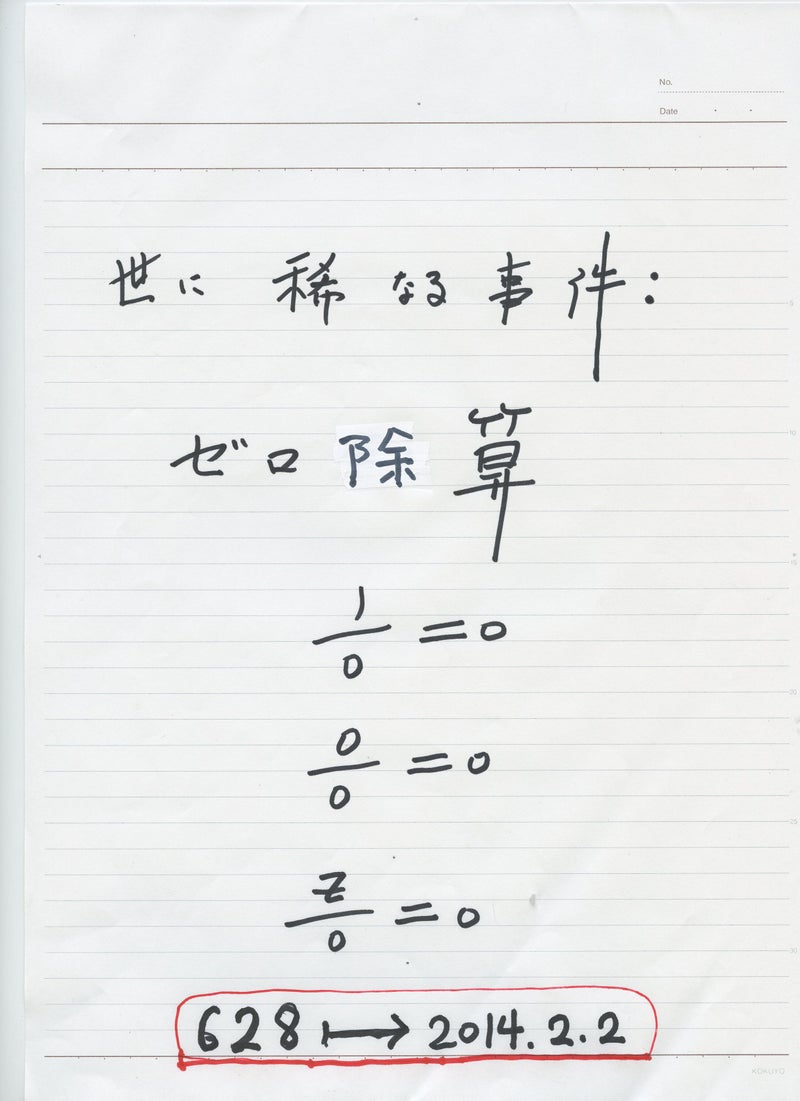






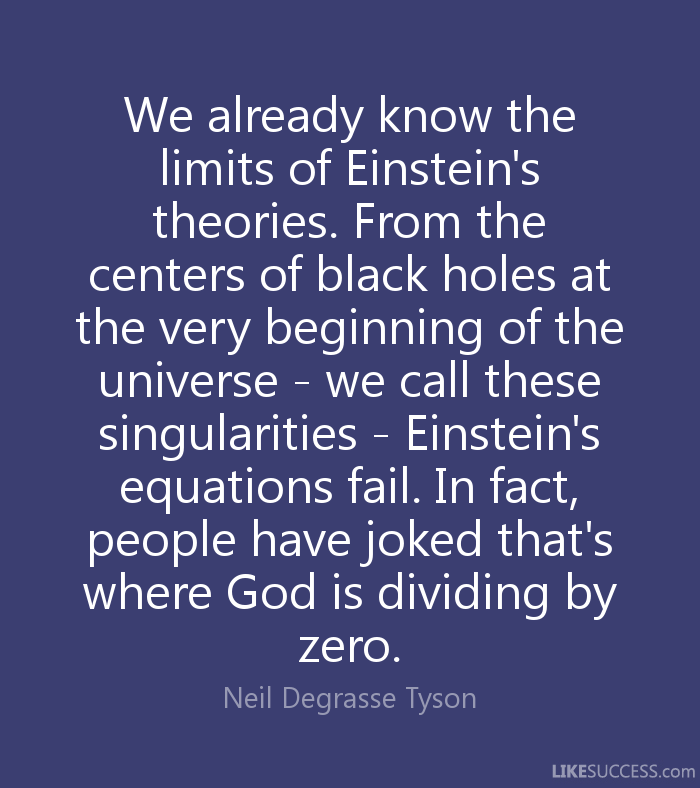


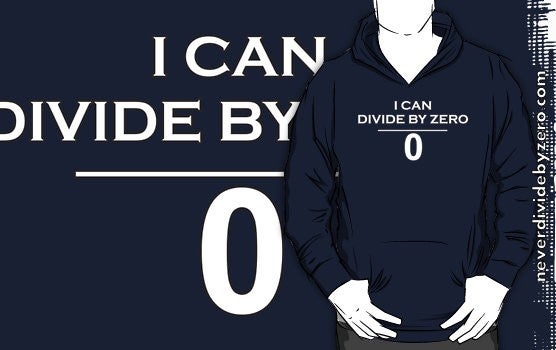



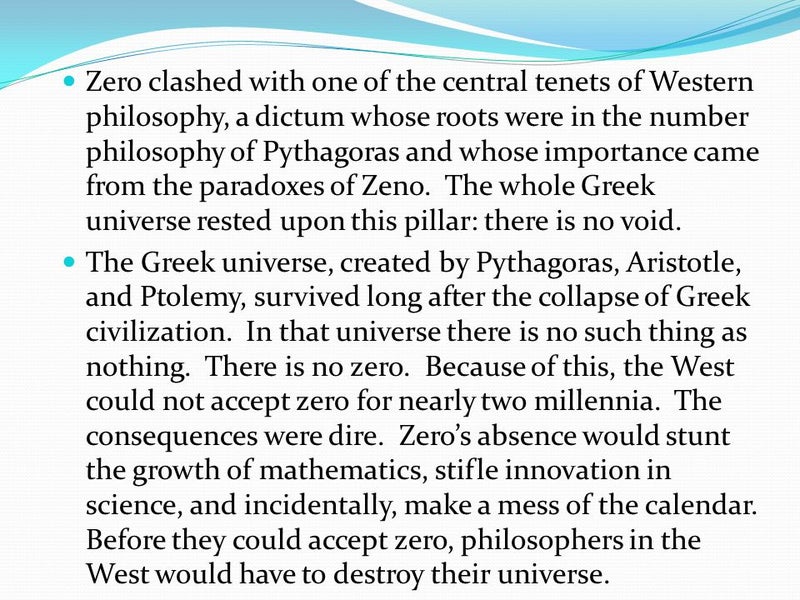
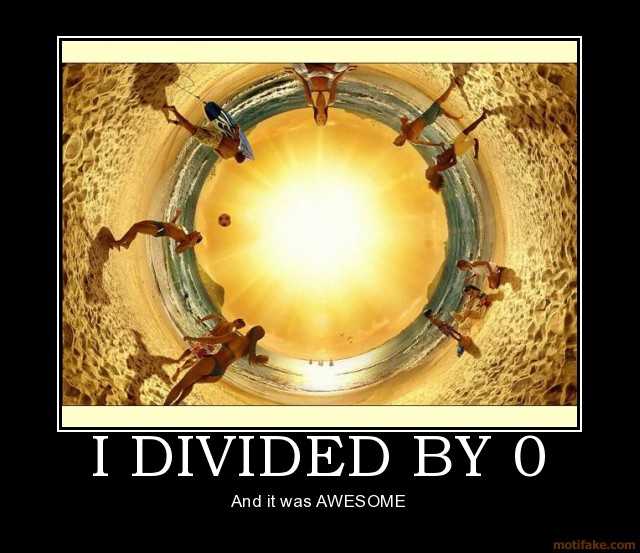

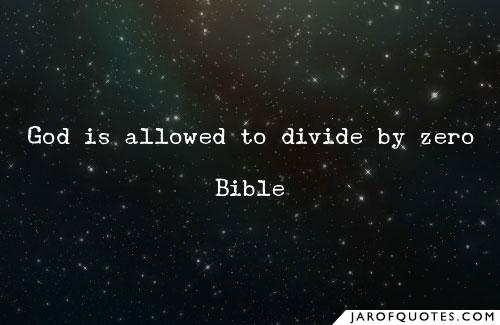





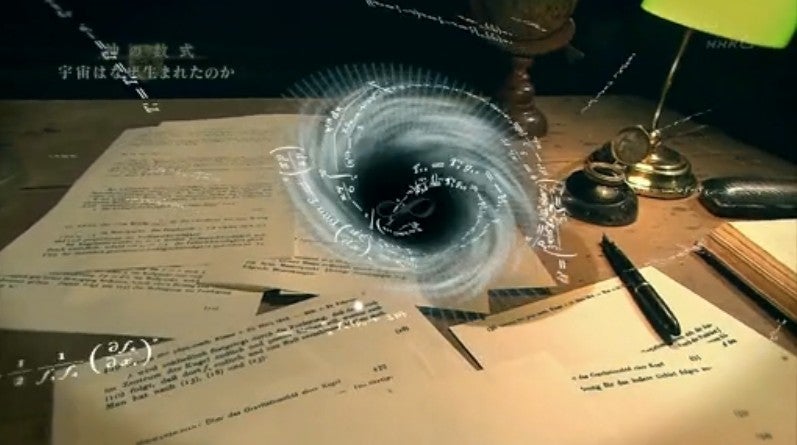









0 件のコメント:
コメントを投稿